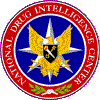
Hawaii High Intensity Drug Trafficking Area Drug Market Analysis
June 2007
Strategic Drug Threat Developments
- Decreasing outdoor cannabis cultivation and a corresponding increase in indoor grow operations in Hawaii may signify a shift in marijuana production practices as cultivators begin to move operations indoors in an attempt to evade law enforcement detection and increase profit margins through diversified growing techniques.
- The diversion and abuse of prescription narcotics such as oxycodone, hydrocodone, and methadone are increasing in the Hawaii HIDTA region, causing considerable concern among law enforcement personnel and treatment providers.
|
Drug Trafficking Organizations, Criminal Groups, and Gangs Drug trafficking organizations are complex organizations with highly defined command-and-control structures that produce, transport, and/or distribute large quantities of one or more illicit drugs. Criminal groups operating in the United States are numerous and range from small to moderately sized, loosely knit groups that distribute one or more drugs at the retail and midlevels. Gangs are defined by the National Alliance of Gang Investigators' Associations as groups or associations of three or more persons with a common identifying sign, symbol, or name, the members of which individually or collectively engage in criminal activity that creates an atmosphere of fear and intimidation. |
HIDTA Overview
The Hawaii HIDTA was established in 1999 to address the threat posed by illicit drugs in the entire state of Hawaii. The state comprises eight main islands and a 1,500-mile chain of islets that spans over 6,400 square miles in the north central Pacific Ocean approximately 2,500 miles from the mainland United States. The islands have a combined population of approximately 1.2 million people; most (approximately 70 percent) reside in the city of Honolulu on the island of O'ahu.
Hawaii's geography, diverse demographics, isolated location, reliance on importation, and high volume of tourist and commercial traffic pose significant challenges to law enforcement. International maritime ports and airports in the state and a developed transportation infrastructure provide for the smooth flow of legitimate commerce and also facilitate transshipment and distribution of illicit drugs and drug proceeds to and through Hawaii. Additionally, the diverse, largely transient (tourist) population in the HIDTA region provides a large customer base and a heightened degree of anonymity for the various drug distributors and criminal groups operating in the state.
The city of Honolulu is Hawaii's primary drug market area; the majority of the state's population is concentrated in the city, and further, it is the HIDTA region's principal port of entry (POE) for travelers, mail, and cargo. Consequently, Honolulu is the primary transshipment point for drugs and drug proceeds to, through, and from the state. Hawaii's international airport, international postal facility, and two busiest commercial harbors are also located in Honolulu. Much of what transpires in terms of drug trafficking and abuse in Honolulu drives the drug situation on each of the other populated islands of the state.